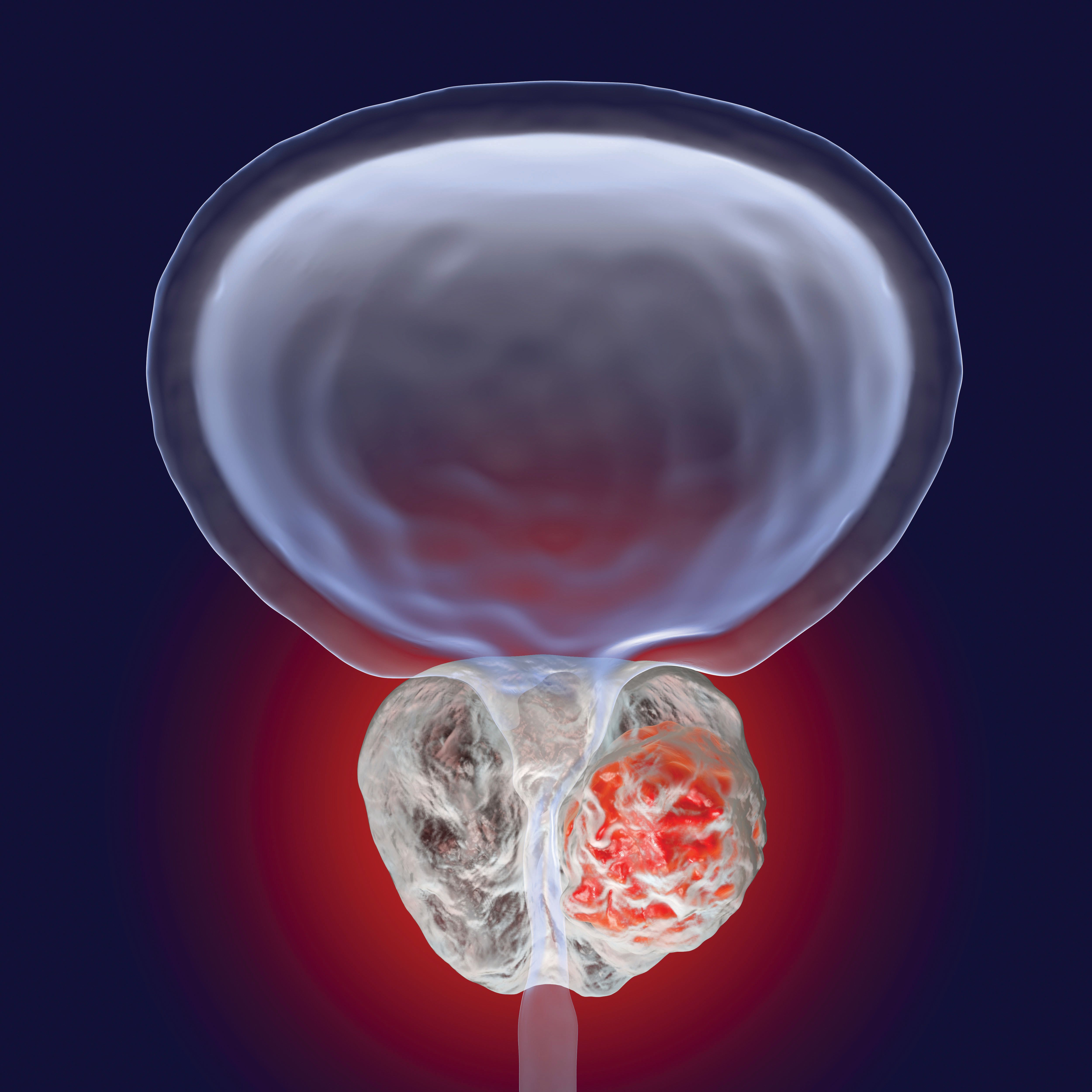NeuroSAFE Improves Erectile Function, Urinary Continence in Prostate Cancer
The adverse effect profile was similar among patients with prostate cancer using NeuroSAFE-assisted RARP vs standard RARP.
“Prostate cancer surgery is a life-saving option for lots of [patients], but it’s a major procedure that can cause [adverse] effects [such as] erection problems,” Matthew Hobbs, MD, director of Research at Prostate Cancer UK, said in a news release.

NeuroSAFE-guided nerve sparing during robot-assisted radical prostatectomy (RARP) improved patient-reported 12-month International Index of Erectile Function (IIEF)–5 scores and short-term urinary continence, according to results from the phase 3 NeuroSAFE PROOF (NCT03317990) trial published in The Lancet Oncology.1
At a median follow-up of 12.3 months (IQR, 11.8-12.7), efficacy data from the trial revealed that the mean IIEF-5 scores were significantly higher in patients undergoing surgery with NeuroSAFE at 12.7 (SD, 8.0) vs 9.7 (SD, 7.5) in those who underwent standard RARP (adjusted mean difference, 3.18; 95% CI, 1.62-4.75; P <.0001). Additionally, a similar benefit was seen in IIEF-6 scores: 15.3 (SD, 9.7) vs 11.5 (SD, 9.0) in each respective population (adjusted mean difference, 3.92; 95% CI, 2.01-5.83; P <.0001).
Patients in the NeuroSAFE group saw significant decreases in International Consultation on Incontinence Questionnaire (ICIQ) scores. The 3-month ICIQ scores among the NeuroSAFE and standard RARP groups were 5.8 (SD, 4.1) and 7.4 (SD, 5.2), respectively (adjusted mean difference, –1.41; 95% CI, –2.42 to –0.41; P = .006). Additionally, at 6 months, scores were 4.5 (SD, 4.2) and 5.1 (SD, 4.7) in the respective groups (adjusted mean difference, –0.37; 95% CI, –1.35 to 0.62; P = .46).
“Prostate cancer surgery is a life-saving option for lots of [patients], but it’s a major procedure that can cause [adverse] effects [AEs, such as] erection problems,” Matthew Hobbs, MD, director of Research at Prostate Cancer UK, said in a news release.2 “A major challenge we face is how to cure [patients] but also ensure they can live life to the [fullest] afterwards. This study is promising and provides evidence that innovative types of surgery can reduce erectile dysfunction in some [patients]. However, more research is needed to prove whether NeuroSAFE is as effective as traditional techniques at delivering a complete cure.”
Patients with non-metastatic prostate cancer eligible for RARP were randomly assigned to receive NeuroSAFE-based RARP (n = 204) or standard RARP (n = 203). Standard RARP was performed by an experienced RARP surgeon using the DaVinci surgical system per NHS standard-of-care protocol.
Patients receiving NeuroSAFE-based RARP underwent initial postero-lateral dissection followed by prostate extraction. Then, segments from the dissection were snap frozen, sectioned, and stained with hematoxylin and eosin before examination by a consultant genitourinary histopathologist. The margins were considered negative if the sides of a section were free of prostate cancer cells.
In the event of positive margins, a secondary resection was recommended if: more than 1 section was positive; there was a prostate cancer Gleason grade 4 pattern or higher; or more than 2 mm of Gleason grade 3 pattern was observed in a single section of an inked margin. Secondary resections encompassed a full excision of the entire ipsilateral neuro-vascular bundle.
The primary end point of the study was erectile function at 12 months assessed by IIEF-5. Secondary end points included the difference in ICIQ scores at 3 and 6 months, and the difference in IIEF-6 scores. Exploratory end points included time from surgery to erectile function recovery, time to urinary continence recovery, and positive surgical margin rates.
The 12-month rates of IIEF-5 scores of 21 or greater were 20% in the NeuroSAFE group vs 14% in the standard RARP group. Additionally, 39% vs 23% of the respective groups had no or mild erectile dysfunction at 12 months. Furthermore, small positive margins were observed in 21% vs 13%, respectively, and large or multifocal positive margins were observed in 14% vs 16%.
A total of 4% of patients in the NeuroSAFE group and 3% of the standard RARP group experienced prostate-specific antigen (PSA) persistence. In the respective groups, 6% and 4% experienced biochemical recurrence, and 4% and 1% underwent adjuvant treatment.
There were 20 AEs and 6 serious AEs observed in the NeuroSAFE group (n = 182) and 25 AEs and 5 serious AEs in the standard RARP group (n = 188). In the standard RARP group, 1 patient experienced 2 serious AEs. A total of 4 patients died within 12 months of surgery: 2 in the NeuroSAFE group due to myocardial infarction and co-occurring cancer and 2 in the standard RARP group due to co-occurring cancer and an unknown cause, with none considered related to prostate cancer or surgery.
References
- Dinneen E, Almeida-Magana R, Al-Hammouri T, et al. Effect of NeuroSAFE-guided RARP versus standard RARP on erectile function and urinary continence in patients with localised prostate cancer (NeuroSAFE PROOF): a multicentre, patient-blinded, randomised, controlled phase 3 trial. Lancet Oncol. Published online March 24, 2025. doi:10.1016/S1470-2045(25)00091-9
- Sample I. Prostate cancer surgery breakthrough offers hope for erectile function. News release. The Guardian. March 24, 2025. Accessed March 24, 2025. https://tinyurl.com/3us729ha
Prolaris in Practice: Guiding ADT Benefits, Clinical Application, and Expert Insights From ACRO 2025
April 15th 2025Steven E. Finkelstein, MD, DABR, FACRO discuses how Prolaris distinguishes itself from other genomic biomarker platforms by providing uniquely actionable clinical information that quantifies the absolute benefit of androgen deprivation therapy when added to radiation therapy, offering clinicians a more precise tool for personalizing prostate cancer treatment strategies.